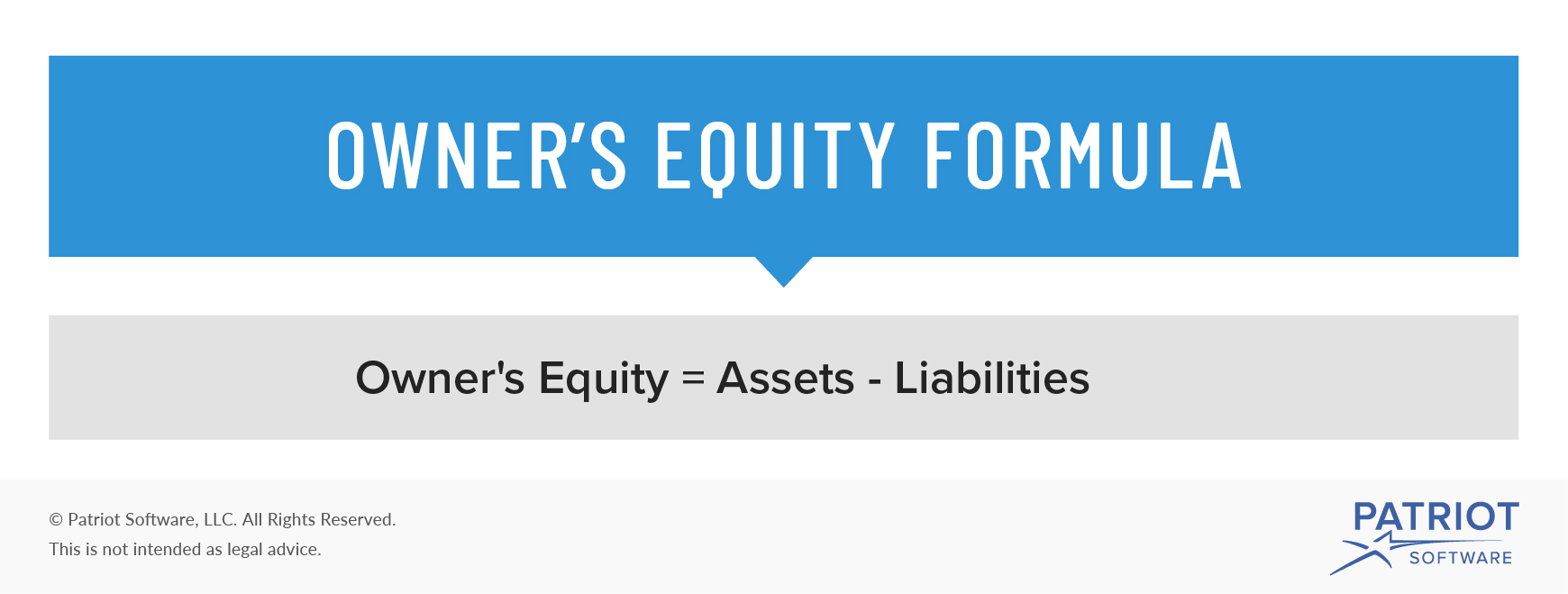If you are a sole proprietor or partner, you or you and your partners are entitled to everything in your business. You don’t provide dividends to shareholders. You have full ownership of your business.
However, you still have liabilities that you need to handle. Failing to consider your liabilities will give you a false picture of your company’s value. Familiarize yourself with owner’s equity to determine how much ownership you truly have in your company. What is owner’s equity?
What is owner’s equity?
Owner’s equity (also referred to as net worth, equity, or net assets) is the amount of ownership you have in your business after subtracting your liabilities from your assets. This shows you how much capital your business has available for activities like investing.
Liabilities are debts your business owes, such as loans, accounts payable, and mortgages. Assets are anything your business owns, such as cash, cars, and intellectual property.
Because liabilities must be paid off first, they take priority over owner’s equity. Deducting liabilities from assets shows you how much you actually own if all your debts were paid off.
Knowing your owner’s equity is important because it helps you evaluate your finances. And, you can compare your owner’s equity from one period to another to determine whether you are gaining or losing value. This can help you make decisions such as whether you should expand. Also, you need to show your owner’s equity to investors and lenders if you are seeking financing.
Keep in mind that owner’s equity shows you the book value of your business, not its market value. Book value is the amount you paid for an asset when you purchased. Market value is the price of an asset when you sell it. Because assets either depreciate or appreciate over time, market value is very different than book value. Do not look to owner’s equity to give you a fair representation of your company’s market value.
Owner’s equity formula
Again, you can find your owner’s equity by subtracting liabilities from assets. Here is the formula you can use to calculate owner’s equity:
To find owner’s equity, you need to add up all your assets and liabilities.
Owner’s equity examples
Let’s say your business has assets worth $50,000 and you have liabilities worth $10,000. Using the owner’s equity formula, the owner’s equity would be $40,000 ($50,000 – $10,000).
Another example would be if your business owned land that you paid $30,000 for, equipment totaling $25,000, and cash equalling $10,000. Your total assets would be $65,000. You owe $10,000 to the bank and you owe $5,000 in credit card debt. Your total liabilities would be $15,000. Your owner’s equity would be $65,000 – $15,000, or $50,000.
Owner’s equity vs. shareholders’ equity
If your business is structured as a corporation, the amount of your assets after deducting liabilities is known as shareholders’ or stockholders’ equity.
Unlike in a sole proprietorship or partnership, everything does not belong to you or you and your partner in a corporation. Shareholders’ equity shows you how much money is available for distributions to shareholders after deducting liabilities.
Owner’s equity accounts
Some income statement accounts impact your owner’s equity. The main accounts that influence owner’s equity include revenues, gains, expenses, and losses.
Owner’s equity will increase if you have revenues and gains. Owner’s equity decreases if you have expenses and losses.
If your liabilities become greater than your assets, you will have a negative owner’s equity. You can increase negative or low equity by securing more investments in your business or increasing profits.
Owner’s equity on the balance sheet
Assets, liabilities, and owner’s equity are the three parts that make up a business balance sheet. On the balance sheet, your liabilities and equity need to equal your assets.
The balance sheet is a type of financial statement that shows your business’s performance during a specific time.
Different accounts appear in the equity section of the balance sheet, including retained earnings and common stock accounts.
You can compare balance sheets from different accounting periods to determine whether your owner’s equity is increasing or decreasing.
Looking for an easy way to find your business’s equity? With Patriot’s small business accounting software, you can track your assets and liabilities and use data to create balance sheets. Plus, we offer free, U.S.-based support. Get your free trial now!
This article has been updated from its original publication date of 01/08/2016.
This is not intended as legal advice; for more information, please click here.

